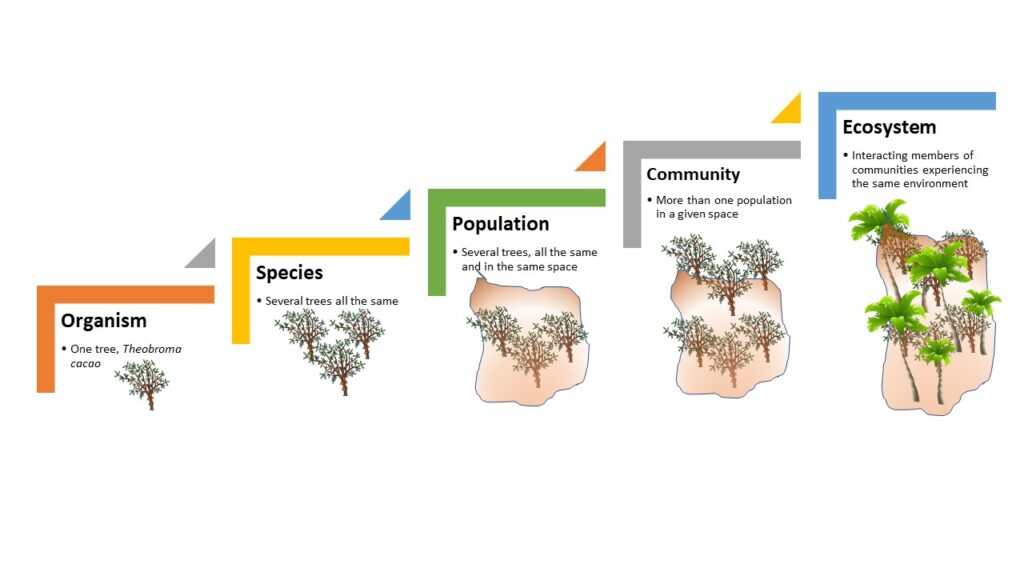Ecologically speaking, an ecosystem collectively represents the living (biotic community) and nonliving (environment) components of a habitat, and the energy and nutrient flows between them.
Biotic communities include all living organisms consisting of bacteria, fungi, plants, and animals. British Botanist Sir Arthur G. Tansley coined the term in 1935 to add to the hierarchy of scale previously established in ecology, spanning from individuals to species, populations, communities, and – later – ecosystems.
Ecosystem researchers typically investigate how interactions between living and nonliving components shape the way processes occur within particular ecosystems. Such hierarchy in terminology still exists, although ecologists now place more simultaneous emphasis on multiple or broader (that is, landscape) scales.
Types of ecosystems generally refer to their main biota (for example, forest or microbial ecosystems), or a more general type of habitat (for example, terrestrial or aquatic).
Ecological example: Theobroma cacao, the species of plant from which we ultimately derive chocolate, often thrives best in a diverse, tropical forest ecosystem. When used in combination, the term “cacao ecosystem” refers to both the biological products harvested and the supply chain (that is, the abiotic environment) involved in turning those products into chocolate.
Cocoa-relevant example: Increasing deforestation endangers the health of cacao ecosystems worldwide, and could add increasing pressure on farmers to grow varieties with larger yields but less flavor.
The business world (see Tsujimoto et al. reference) and other social science disciplines adopt the term “ecosystem” in additional applied ways. This could include a mass-balance approach to describe a distinct unit made up of several components where, under ideal conditions, inputs and outputs account for each other.
Consequently, a healthy ecosystem keeps functioning within a base set of assumptions. When expected exports fall short of the inputs, the generic ecosystem model indicates an imbalance and users look for mechanism(s) to shift productivity back towards the positive end.
Alternatively, an ecosystem could refer to the network necessary to provide a product or service.
Applied example: In addition to the chocolate itself, the “fine chocolate ecosystem” includes the farmers that carefully cultivate flavorful, healthy cacao, and the global industry that creates a marketplace for chocolate derived from ethical, transparent, and intentional practices.
Próximamente versión en español


Ecosystem schematic; graphic by Dr. Romi Burks
Authored by
Romi Burks, Professor of Biology & Chocolate Educator
Academic / University Faculty
References
“The Use and Abuse of Vegetational Concepts and Terms,” A. G. Tansley, Ecology (1935): 284-307; access a pdf of this article
“A review of the ecosystem concept — Towards coherent ecosystem design,” Masaharu Tsujimoto et al., Technological Forecasting & Social Change 136 (2018): 49–58; access a pdf of this article
Have a comment on this definition?
